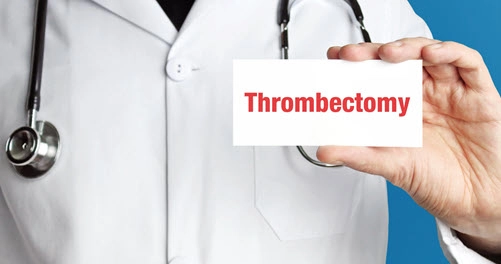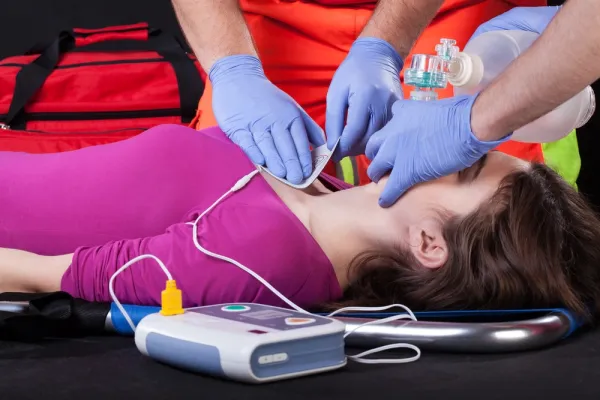Cardiology Coding Alert
3 Steps Help You Easily Navigate Mechanical Thrombectomy Claims
Hint: Look to +37186 for secondary arterial mechanical thrombectomy.
When your cardiologist performs mechanical thrombectomy, which is removing a thrombus from a vessel to help restore circulation, you must pay attention to numerous details in the provider’s documentation. For instance, you should determine if your cardiologist performed an arterial or venous mechanical thrombectomy.
Follow these steps to keep your mechanical thrombectomy claims in tip-top shape.

Step 1: Submit These 2 Codes for Primary Arterial Mechanical Thrombectomy
Your cardiologist can perform either a primary or a secondary arterial mechanical thrombectomy. When your cardiologist performs a primary arterial mechanical thrombectomy, they will diagnose the thrombus prior to performing the mechanical thrombectomy procedure. The cardiologist will also preoperatively plan the thrombectomy. After they perform the thrombectomy, they will conduct a post-procedure evaluation.
“Primary mechanical thrombectomy may precede or follow another percutaneous intervention. Most commonly primary mechanical thrombectomy will precede another percutaneous intervention with the decision regarding the need for other services not made until after mechanical thrombectomy has been performed,” per the CPT® guidelines. “Occasionally, the performance of primary mechanical thrombectomy may follow another percutaneous intervention.”
Report code 37184 (Primary percutaneous transluminal mechanical thrombectomy, noncoronary, non-intracranial, arterial or arterial bypass graft, including fluoroscopic guidance and intraprocedural pharmacological thrombolytic injection(s); initial vessel) per vascular family for the initial arterial vessel your cardiologist treats, according to the CPT® guidelines.
“A primary arterial mechanical thrombectomy is planned, however, once the clot is removed the physician often will find an underlying area of stenosis that requires intervention. In this situation the mechanical arterial thrombectomy is still considered primary because the removal of the clot was the primary focus,” says Robin Peterson, CPC, CPMA, manager of professional coding, Pinnacle Integrated Coding Solutions, LLC.
Modifier alert: If you are reporting mechanical thrombectomy of an additional vascular family your cardiologist treated through a separate access site, you should append modifier 59 (Distinct procedural service) to 37184 for the mechanical transluminal thrombectomy.
Report +37185 (… second and all subsequent vessel(s) within the same vascular family (List separately in addition to code for primary mechanical thrombectomy procedure)) for the second or all subsequent vessels within the same vascular family.
Don’t miss: Per the portion of the code descriptor that reads “second and all subsequent vessel(s),” you should report code +31785 just once, no matter how many subsequent vessels your cardiologist treats in a given vascular family, according to CPT® Assistant Volume 29, Issue 9. “Note should be made that other interventions (e.g., percutaneous transluminal angioplasty) may be performed in conjunction with the thrombectomy to treat a previously unidentified (revealed only after clearing the thrombus) underlying pathology (eg, stenosis), and may be separately reported.”
Step 2: Rely on 1 Code for Secondary Arterial Mechanical Thrombectomy
In some cases, your cardiologist will perform a secondary transcatheter thrombectomy procedure “for the removal or retrieval of short segments of thrombus or embolus when performed either before or after another percutaneous intervention (eg, percutaneous transluminal balloon angioplasty, stent placement),” per the CPT® guidelines.
Report a secondary arterial mechanical thrombectomy with code +37186 (Secondary percutaneous transluminal thrombectomy (eg, nonprimary mechanical, snare basket, suction technique), noncoronary, non-intracranial, arterial or arterial bypass graft, including fluoroscopic guidance and intraprocedural pharmacological thrombolytic injections, provided in conjunction with another percutaneous intervention other than primary mechanical thrombectomy (List separately in addition to code for primary procedure)).
“Secondary arterial mechanical thrombectomy is always performed in conjunction with another primary intervention (eg, transluminal balloon angioplasty, stent placement), which is reported separately,” according to CPT® Assistant.
“Removal of a clot is considered inherent to an atherectomy if the clot is part of the primary lesion being treated,” Peterson says “However, you may report +37186 for secondary arterial mechanical thrombectomy for removal of a clot in a different vascular territory downstream from the primary lesion.”
Caution: Never report +37186 in conjunction with codes 37184 and +31785, per the CPT® guidelines.

Step 3: Turn to 37187, 37188 for Venous Mechanical Thrombectomy
If your cardiologist uses venous transcatheter therapies, you should report code 37187 (Percutaneous transluminal mechanical thrombectomy, vein(s), including intraprocedural pharmacological thrombolytic injections and fluoroscopic guidance) for the initial application.
Don’t forget: If your cardiologist performs a bilateral venous mechanical thrombectomy through a separate access site(s), append modifier 50 (Bilateral procedure) to code 37187.
If your cardiologist performs repeat treatment on a subsequent day during the course of thrombolytic therapy, report 37188 (Percutaneous transluminal mechanical thrombectomy, vein(s), including intraprocedural pharmacological thrombolytic injections and fluoroscopic guidance, repeat treatment on subsequent day during course of thrombolytic therapy).
Caution: Never report codes 37187 or 37188 in conjunction with codes 76000 (Fluoroscopy (separate procedure), up to 1 hour physician or other qualified health care professional time) or +96375 (Therapeutic, prophylactic, or diagnostic injection (specify substance or drug); each additional sequential intravenous push of a new substance/drug (List separately in addition to code for primary procedure)), per CPT®.
Related Articles
Cardiology Coding Alert
- Thrombectomy:
3 Steps Help You Easily Navigate Mechanical Thrombectomy Claims
Hint: Look to +37186 for secondary arterial mechanical thrombectomy. When your cardiologist performs mechanical thrombectomy, [...] - ICD-10-CM:
Combat Common Atherosclerosis Reporting Challenges With This Expert Advice
Learn which details need to be in documentation for atherosclerotic heart disease with angina pectoris. [...] - Communications:
Improve Communications Skills by Becoming a Better Listener
Hint: Tone and timing are also important. In the session “A Practical Guide to Client [...] - You Be the Coder:
Differentiate Between Carotid Artery Stenosis Codes
Question: The patient has carotid artery stenosis, so my cardiologist placed an intravascular stent in the [...] - Reader Questions:
Pinpoint Correct Hypertrophic Cardiomyopathy Code
Question: My cardiologist diagnosed a patient with hypertrophic cardiomyopathy. What is this condition, and which ICD-10-CM [...] - Reader Questions:
Figure Out MDM Puzzle
Question: If a patient has only one chronic problem that is not worsening but is not [...] - Reader Questions:
Focus on Impactful Conditions for Dx Coding
Question: When preparing a claim, should you enter the diagnosis code only for the condition the [...] - Reader Questions:
See Appropriate Dx Choice for Sinus Bradycardia
Question: My cardiologist diagnosed a patient with sinus bradycardia. Which ICD-10-CM code should I report for [...] - Reader Questions:
Decipher This Cardiac Cath Question
Question: My cardiologist introduced a catheter through the patient’s skin and moved the guidewire into the [...]




